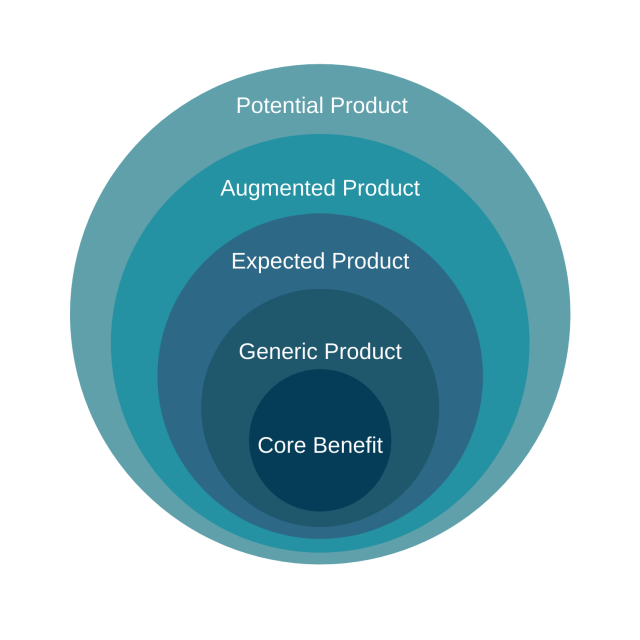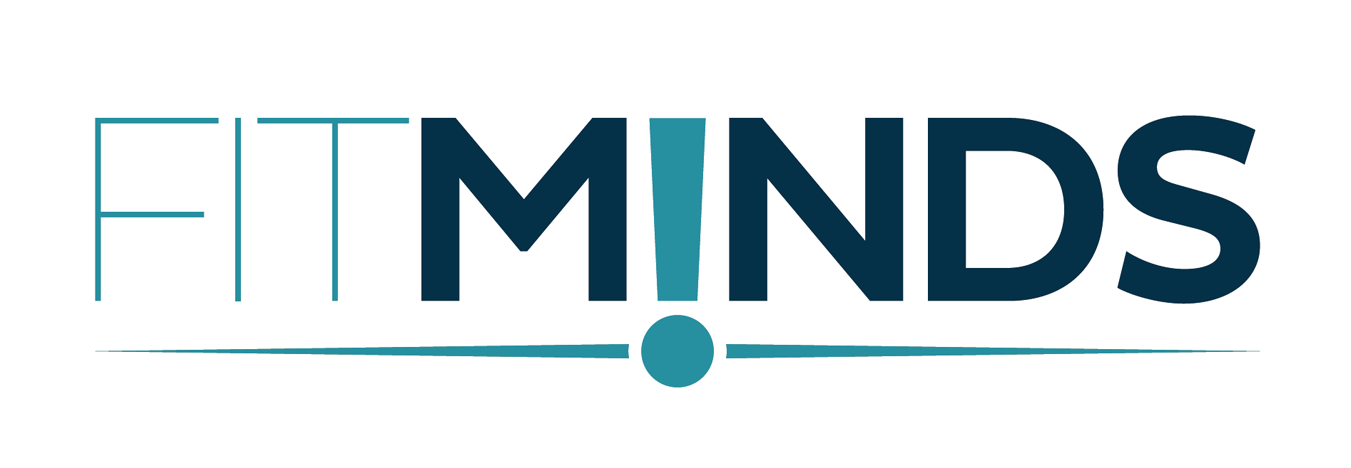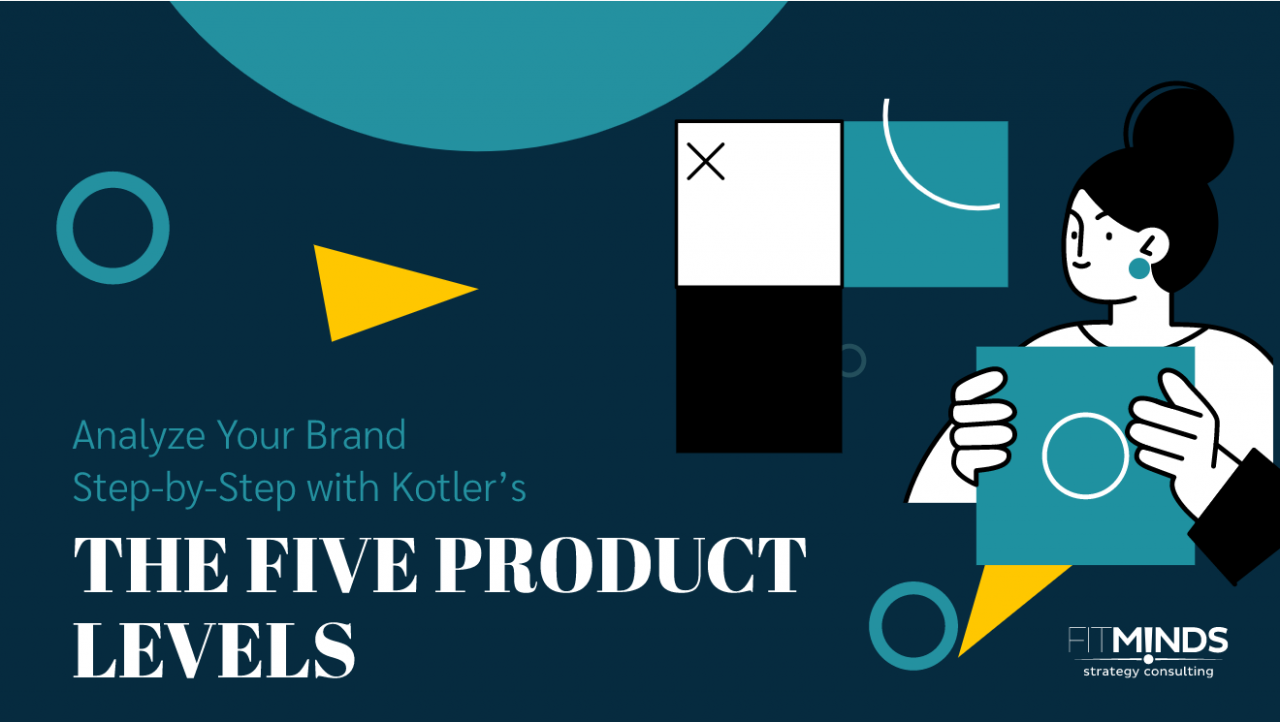The Five Product Levels, another Kotler-developed framework, analyzes a product on 5 different levels of customer needs and wants.
Benefits of The Five Product Levels
- Serves a canvas to analyze products in a market
- Provides steps to guide your product development and differentiation efforts
- Helps you assess your product’s frame of reference and point of difference
Explanation of The Five Product Levels
Kotler first stated The Five Product Levels in his book Marketing Management, in 1967. In his book, he describes a product as anything that can satisfy consumer needs and wants. Therefore, The Five Product Levels evaluates a product with respect to 5 levels of customer needs and wants.
First, let us define what is a need and want.
- Customer need is customer’s basic requirement for an essential benefit.
- Customer want is customer’s request for a group of benefits which are not essential, but the customer wishes for.
The Five Product Levels model puts customer need as the core of the product. From Core Product to Potential Product, model analyzes how a product should address first customer needs, then wants.
- Core Product: This is the core benefit of the product which will satisfy the need, main requirement of the customer. For example, for a hotel, it is to provide a place to stay.
- Generic Product: This represents the features/benefits that are associated with a properly functioning product. Building on the hotel example, utilities such as bed, blanket, bathroom…etc. constitutes the generic product.
- Expected Product: This level of the product is the set of attributes and/or characteristics, that the consumer might expect. Generally, from this level on, intangible attributes start to emerge, such as some level of privacy, hygiene, calmness, friendly personnel, etc. However, additional tangible benefits may also be an element of the expected product level, such as free wi-fi, parking lot, etc.
- Augmented Product: Additional benefits/attributes/services that serve to differentiate the product from its competitors. For example, children’s play area with well-educated pre-school personnel may delight families with little children.
- Potential Product: This is the product with all the improvements the product might undergo in the future. The ultimate product.
Inside out, customer value increases, creating space for price increase and enhanced profitability.
Please note that to apply the model properly, you must consider the market of the product that you are analyzing/developing. For example, the same attribute (let us say, free wi-fi) may be an expected product attribute in mid-price range hotels segment but can be considered as an augmented product attribute for the budget segment.
However, it would be fair to say that The Five Levels of Product is a very product-centric model, rather than being customer-centric or competitive-centric.
To complement your understanding, you may read our articles listed below:
- What is Brand Equity? How to Use Keller’s Brand Equity Pyramid to Analyze and Improve Your Brand’s Equity?
- Unique Selling Proposition: What Makes Your Product/Service Stand Out?
- VRIO Framework: Ensuring Long-Term Competitive Advantage
- Perceptual Mapping: Visualize Your Competitive Position
- An Introduction to Blue Ocean Strategy – Part II: How to Create New Markets
Contact us to analyze and strengthen your product, portfolio and/or branding.




13 comments
Pingback: buy enclomiphene uk cheapest
Pingback: generique kamagra beau prix pas
Pingback: online order androxal canada price
Pingback: get flexeril cyclobenzaprine usa overnight delivery
Pingback: how to order dutasteride buy from canada
Pingback: how to order gabapentin purchase prescription
Pingback: how to buy fildena buy online usa
Pingback: order itraconazole generic tablets
Pingback: get staxyn cost at walmart
Pingback: online order avodart price singapore
Pingback: Order rifaximin online from mexico
Pingback: cheap xifaxan generic xifaxans
Pingback: koupit kamagra
Comments are closed.